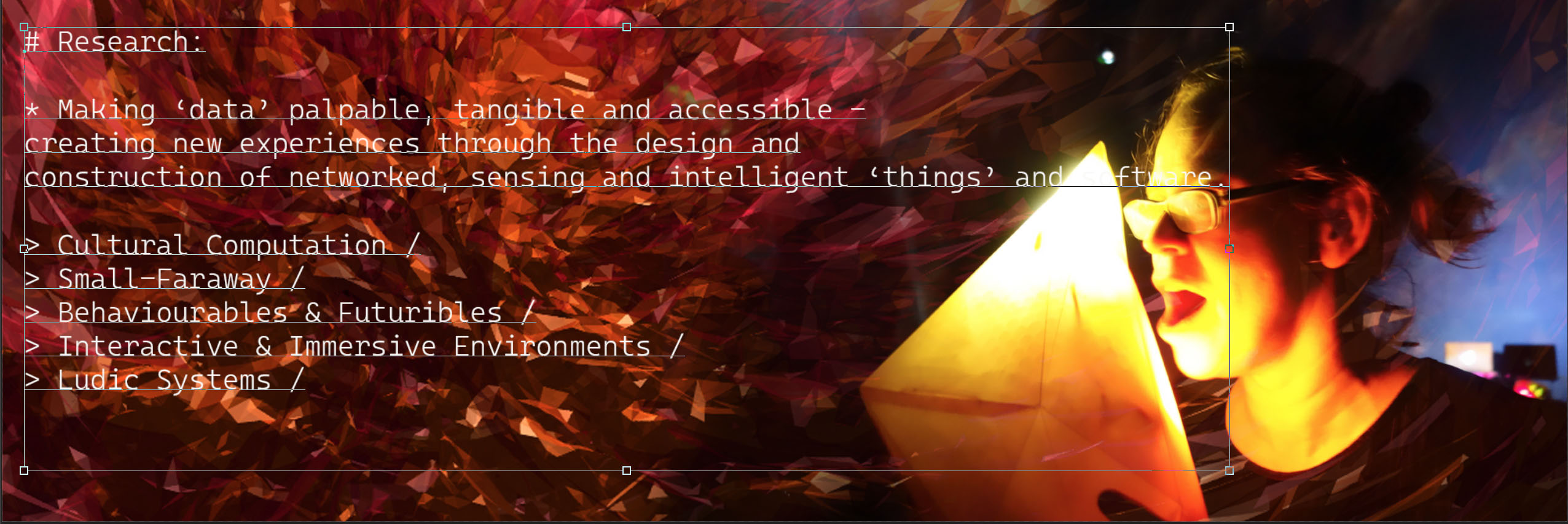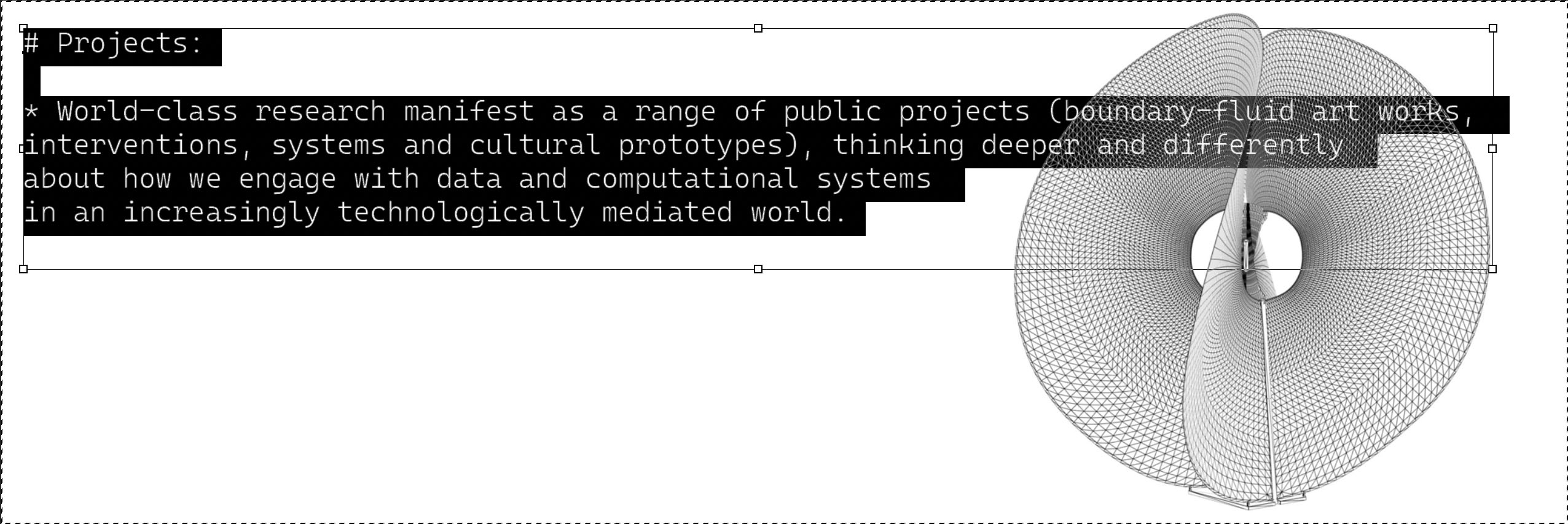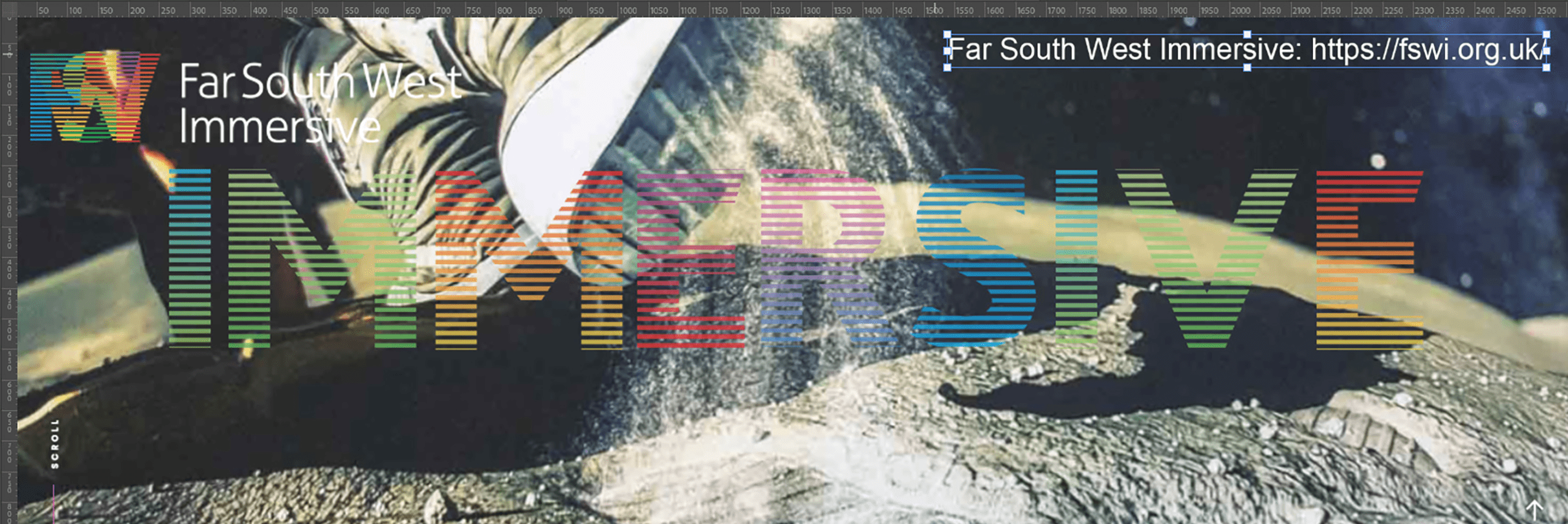

Over the last 20+ years i-DAT has had a syncretic relationship with Roy Ascott‘s Planetary Collegium (& its CAiiA (Centre for Advanced Inquiry in the Interactive Arts), STAR (Science Technology and Art Research) and CAiiA-STAR manifestations).
Ctrl+Alt+Del seeks to celebrate the syncretic relationship between i-DAT and the Planetary Collegium. The first phase of this process is the FUTURE HISTORY project.
Roy Ascott:
Professor Roy Ascott originally joined the University of Plymouth as the first External Examiner for the BSc (Hons) MediaLab Arts in 1993. In 1994 he established the Centre for Advanced Inquiry in the Interactive Arts (CAiiA) in Caerleon (later to become part of the University of Wales, Newport) and, three years later, joined the University of Plymouth as a Professor in the School of Computing to establish STAR (Science Technology and Art Research). CAiiA-STAR constituted a trans-institutional research platform with Michael Punt (who later also relocated to Plymouth) operating as Principal Supervisor in CAiiA and Mike Phillips as Principal Supervisor in STAR. CAiiA-STAR was superseded in 2003 by the formation of the Planetary Collegium when Ascott exited the University of Wales for the University of Plymouth.
BSc (Hons) MediaLab Arts and later MA/MSc Digital Futures drew on Ascott’s radical educational principles established in the Ground Course, OCAD, and San Francisco Art Institute, synthesised into the evolving and volatile digital context/practices/markets of the mid 1990’s. The nomadic model of the CAiiA-STAR PhD Programme also provided inspiration for MA/MSc Digital Futures, which, although based around an innovative core online/streaming/virtual pedagogy, incorporated intensive face to face sessions in various locations (Watershed, HP Labs, Arnolfini, Groucho Club, Whitechapel Gallery, etc).
Collaborations with members of i-DAT existed prior to the emergence of the CAiiAnostra. In 1985 Mike Phillips and Robert Pepperell, working from the Slade School of Art (Mixed Media/Studio 5), University College London, developed a set of protocols using UCL’s EUCLID mail servers. This cultivated an ongoing relationship which helped develop:
Networking:
Roy Ascott in Toulouse 1986 with Robert Pepperell, Mike Phillips and students from Caerleon using the Euclid network to transmit images for the global networking event. Other networking projects, included Aspects of Gaia, 1989 at Ars Electronica, Linz, Austria.
Syncretica:
The Syncretic Sense, Roy Ascott Exhibition took place at Plymouth Art Centre from the 4 April to the 24 May 2009. Syncretica.net was an online version of the exhibition that aggregated archived content related to Ascott’s work allowing viewers to collaboratively create and manage tags that annotate and categorise this content. Feeding of web 2.0 sites such as Flickr and YouTube Syncretica.net creates a dynamic evolving folksonomy of Ascott’s work.
LPDT2:
i-DAT contributed to LA PLISSURE DU TEXTE 2 (LPDT2) (Incheon International Digital Art Festival 2010 (INDAF), 01-30/09/2010, Tomorrow City, Songdo, Incheon, Korea) a Twenty First Century reimagination of Roy Ascott’s famous telematic work LA PLISSURE DU TEXTE from 1983. This Second Live version (built and enacted by Elif Ayiter , Max Moswitzer and Selavy Oh, in association with Heidi Dahlsveen) is installed at INDAF incorporates an Artificial Intelligence which enables the public to enter into an SMS conversation with the LPDT2 metaverse.
Future History:
FUTURE HISTORY takes a look in the rear-view mirror as we accelerate through this post-digital phase of our cultural evolution. It celebrates the last 25 years of radical innovation in arts practice, education and research and locates Plymouth at the centre of it all. Rooted in the cybernetic, telematic and interactive behaviours defined by Roy Ascott, FUTURE HISTORY maps this influence on the emergence of contemporary art forms: the digital, wearable, immersive, biological, and artificial.
CAiiA-STAR Servers:

See miscellaneous below…
The Planetary Collegium:
Within a transcultural, transdisciplinary perspective, the Planetary Collegium is concerned with the advancement of emergent forms of art and architecture, in the context of telematic, interactive and technoetic media, and their integration with science, technology, and consciousness research.
The Planetary Collegium developed an innovative networked ‘Node’ model comprising:
CAiiA: the Plymouth Hub (Centre for Advanced Inquiry in Integrative Arts): Professor Roy Ascott, Principal Supervisors: Dr Jane Grant 2010 – ), Professor Mike Phillips, Professor Michael Punt (1994 – 2010) and Supervisors have included: Dr Peter Anders, Brian Eno, Professor James Gimzewski, Mr Steve Grand, Professor Des Mapps, Dr John Matthias, Professor Eduardo Miranda, Dr Sana Murrani, Professor Giorgos Papakonstantinou, Professor Robert Pepperell, Mr Enrico Pitozzi, Dr Edward Shanken, Dr Christa Sommerer, Professor Chris Speed, Dr Georges Teyssot, Mr Nicholas Tresilian.
M-Node: at the Nuova Accademia di Belle Arti, NABA (2003 – 2018), later to be come the T-Node at Trento, Director Professor Francesco Monico. The Trento Node (T-Node) was developed by Ars Academy Research in collaboration with ahref Foundation. Professor Antonio Caronia (1944-2013) was the Director of Studies until his untimely death, with supervisors Professor Pier Luigi Capucci (Director of Studies from 2013) and Professor Derrick de Kerckhove. http://www.arsacademy.com/t-node-phd/ (& PDF version).
Z-Node: (Zurich Node), Director Dr Jill Scott, based in the Hochschule fuer Gestaltung und Kunst, Zurich (HGKZ) (2004 to 2016). Director of Studies were Prof. Dr. Jill Scott, Dr. Angelika Hilbeck, and Second Supervisors: Prof. Dr. Matthias Vogel, Dr. Steffan Schmidt, Dr. Daniel Bisig, Dr. Andrea Gleiniger, Prof Dr. Stephan Guenzel, Prof. Dr. Therese Steffen, Prof Dr. Thea Brejzek, Prof. Dr. Dieter Mersch, Prof. Dr. Olaf Blanke. Z-Node Website http://www.z-node.net/cms/index.html (Z-Node Website PDF print).
i-Node: (Ionian Node), Director Dr Katerina Karoussos, based in the Ionian Centre for Arts and Culture, Metaxata village, Island Kefalonia, Greece (2011 – 2015). Director of Studies Dr. Iannis Zannos (Professor at Masters Programme in Sonic Arts and Technologies, Music Department, Ionion University, Corfu, Greece), Second Supervisor Professor Georgos Papakonstantinou (Professor in the University of Thessaly Greece). i-Node website: https://ionionartscenter.gr/ (& PDF version).
NGL Node: (Neue Galerie Luzern), Director Dr René Stettler, based at Neue Galerie Luzern /
Swiss Biennial on Science, Technics + Aesthetics, P.O. Box 3501, CH-6002 Lucerne, Switzerland (2013 – 2018). NGL Node Board: President: Dr. phil. René Stettler, Vice-President: Hanspeter Fischer, Advisor, Vice-President: Dr. rer. nat. Ulrich Claessen. NGL Node website https://www.neugalu.ch/phd_programme.html (& PDF version).
DeTao-Node: Director Roy Ascott, based at the Technoetic Arts Studio, Detao Masters Academy, Shanghai Institute of Visual Arts (SIVA) (上海视觉艺术学院) is a public university in Songjiang District of Shanghai, China (2015 – ). Associate Director of DeTao Node: Jing(Luna) Zhou, Prof. Marc Battier, Prof. Jack Lew, Director of Studies: Professor Jieming Hu, Dr. Craig Caldwell, Prof. Soon-In Lee, Prof. Min Wang, Prof. Richard Tabor Greene. Roy Ascott Studio website http://www.royascottstudio.com/ (& PDF version).
Third supervisors for all Nodes were drawn from the CAiiA Plymouth Hub: Professor Roy Ascott, Dr Jane Grant (2010 – ), Professor Mike Phillips (1995 – ), Professor Michael Punt (1994-2010).
Aims:
The collegium aims to produce new knowledge in the context of the arts, through transdisciplinary inquiry and critical discourse, with special reference to technoetic research and to advances in science and technology.
It seeks to reflect the social, technological and spiritual aspirations of an emerging planetary society, while sustaining a critical awareness of the retrograde forces and fields that inhibit social and cultural development.
It combines the face-to-face association of individuals with the trans-cultural unity of telematic communities, thereby developing a network of research nodes strategically located across the planet, each with a distinctive cultural ethos.
The collegium seeks outcomes that involve new language, systems, structures, and behaviours, and insights into the nature of mind, matter and human identity.
Researchers:
A random selection from the 80+ PhDs awarded since 1998:
‘Principles of Metadesign’. Giaccardi, Elisa. (2003). PhD University of Plymouth
Elif Ayiter: GROUND<C>: A METAVERSE LEARNING STRATEGY FOR THE CREATIVE FIELDS
Isabella Beyer: Le Passage – Towards the Concept of a New Knowledge Instrument
Jürgen Faust: Discursive Designing Theory – Towards a Theory of Designing Design
Wolfgang Fiel: DISSIPATIVE URBANISM From Democracy towards a Constitution of Time
Jennifer Kanary Nikolov: LABYRINTH PSYCHOTICA – SIMULATING PSYCHOTIC PHENOMENA
Denis Roio: Algorithmic Sovereignty
Tiffany Holmes: Eco-visualisation: Combining art and technology to reduce energy consumption
Claudia Ferreira Jacques de Moraes Cardoso
Kathrine Johansson: Subject and Aesthetic Interface – an inquiry into transformed subjectivities
Linus Lancaster: Soils and Interventions
James Moore: Montage As A Participatory System: Interactions with the Moving Image
Juergen Moritz: Towards the Affect of Intimacy
Gretchen Schiller: The kinesfield : a study of movement-based interactive and choreographic art
Composite Sessions:
Planetary Composite Sessions are the core of the programme. Each of the nine ten day Composite Sessions over the first three years of a research students registration (three Composite sessions per year – normally April/July/November) consists of collective research updates, individual tutorials, a critical co-ordination of research students feedback and a short summary response to the group. The composite sessions originally brought together research students registered in CAiiA (University of Wales, Newport) and STAR (University of Plymouth), before becoming a vehicle for bringing together the Planetary Collegium Nodes. The default location for Composite Sessions was the University of Plymouth, i-DAT (Portland Square or Roland Levinsky Building). Sessions have been hosted by:
{images from the personal archive of Mike Phillips}
1997: Artspace Media Centre, Dublin. Eire.
1998: La Beneficia Cultural Centre, Valencia, Spain.

1999: CADE’99 (Computers in Art & Design Education 99), University of Teeside.

1999: CYPRES, Marseilles, France.

1999: Federal University, Rio de Janeiro, and invenção, São Paulo, Brazil.

2000: University of Arizona, Tucson, USA.

2000: École Nationale Supérieure des Beaux-Arts, Paris, France.

2001: Fondazione Fitzcaraldo, Turin, Italy.

(meeting with the newly formed Interaction Design Institute, Ivrea, with Professor Gillian Crampton Smith).
2001: Universitat Oberta de Catalunya, Barcelona, Spain.

2001: University of California DARNet, Santa Cruz and Los Angeles, USA.

2002: University of Arizona, Tucson, USA.

2002: BEAP02: Curtin University, Perth, Western Australia.

2002: IAMAS, Ōgaki, Gifu, Japan.

2003: The Hochschule fuer Gestaltung und Kunst, Zurich, Switzerland.

2003: Centro Dragáo do Mar de Arte e Cultura, Fortaleza, Ceará (organised by Escola deComunicaçáo, Universidade Federal do Rio de Janeiro), Brazil.

2004: Ciberart, Bilbao, Spain.

2004: School of Software, Peking University, Beijing, China.

2005: Texas Woman’s University, Dallas, USA.
2005: Sabanci University, Istanbul, Turkey.
2006: University of Arizona, Tucson, USA.

2006: SESC, São Paulo, Brazil.

2007: Hexagram, Montreal, Canada.

2007: Nuova Accademia di Belle Arti Milano (NABA), Milan, Italy.

2008: LABoral Centro de Arte y Creación Industrial, Gijon, Asturias, Spain.

2008: Universität für Angewandte Kunst Wien Vienna, Austria.

2008: Sesc, São Paulo, Brazil.

2009: La Sala Parpallo, Valencia, Spain.

2009: Macromedia Hochschule für Medien und Kommunikation, Munich, Germany.

2010: Artshare, Porto, Portugal.

2011: Ionion Centre for the Arts and Culture, Kefalonia, Greece.

2012: CIANT, International Centre for Art and New Technologies, Prague, Czech Republic.

2013: XARTS, International Conference on Extended Arts. From Virtual to Real, Syros, Greece.

2013: University of Zagreb, Faculty of Electrical Engineering and Computing.

2014: CAC4 + Hiperorgânicos5, Avenida Pedro Calmon, 550 / Sala Samira Mesquita/ Mezanino – Cidade Universitária , Ilha do Fundão, Rio de Janeiro.

2014: University of the Witwatersrand, Fak’ugesi Digital Africa Conference, Johannesburg, South Africa.

2016: American University in Cairo / Cairotronica, Cairo, Egypt.

2017: Transgression – Transcendence in Art & Science. Department of Audio and Visual Arts of the Ionian University at Corfu island, Corfu, Greece.

2019: Rubrics of Transformation Symposium. The New Technologies Laboratory of the Dept. of Communication and Media Studies of the National and Kapodistrian University of Athens, The Municipality of Athens. Serafio City of Athens.

Consciousness Reframed:
Roy Ascott developed the Consciousness Reframed series of Conferences which also provided a platform for the Planetary Collegium composite sessions.
1997, 1998, and 2000: Consciousness Reframed. University of Wales College, Newport, UK.

1998: Interstices, The Architecture of Consciousness Symposium, University of Plymouth, UK.

2002: BEAP (Biennale of Electronic Arts Perth) Consciousness Reframed. Hosted by Curtin University, Perth, Western Australia.
2003: Consciousness Reframed. University of Wales College, Newport, UK.

2004: Qi and Complexity. Digital Media Studio, Central Academy of Fine Arts; China Electronic Music Centre, Central Conservatory of Music; Department of Digital Art and Design, School of Software, Peking University; Institute of Digital Media, Beijing Normal University. Beijing, China.

2005: Altered States: Transformations of Perception, Place & Performance. University of Plymouth, UK.

2006: Altered States: Immatereality. University of Plymouth, UK.

2008: New Realities: Being Syncretic Hosted by Universität für Angewandte Kunst Wien. Vienna, Austria.

2009: Experiencing Design, Behaving Media. Macromedia Hochschule für Medien und Kommunikation. Munich, Germany.

2010: Making Reality Really Real. TEKS – Trondheim Electronic Arts Center. Trondheim, Norway.

2011: Transcultural Tendencies | Transmedial Transactions. Institute of Visual Art, Fudan University. Shanghai, China.

2011: Presence in the Mindfield: Art, Identity and the Technology of Transformation. Centro Cultural Belem and Artshare. Lisbon, Portugal.

2012: Technoetic Telos: Art, Myth and Media. Ionion Center for the Arts and Culture. Kefalonia, Greece.

2013: Behind the Image and Beyond. German University in Cairo, Egypt.

2015: The Matter of the Immaterial. De Tao Masters Academy, Shanghai, China.

2016: Presumptive Predications: Art and the Future. De Tao Masters Academy, Shanghai, China.

2017: Subtle Cybernetics and the Art of Mind. Central Academy of Fine Arts, Beijing, China.

2019: Sentient States: Bio-mind and Techno-Nature. Universidade Catolica Portuguesa, Porto, Portugal.


Miscellaneous:
CAiiA-STAR Logos:
 Original CAiiA logo developed by Roy Ascott, 1994.
Original CAiiA logo developed by Roy Ascott, 1994.
 STAR logo developed by Mike Phillips, 1996.
STAR logo developed by Mike Phillips, 1996.
 CAiiA-STAR logo developed by Mike Phillips, 1997.
CAiiA-STAR logo developed by Mike Phillips, 1997.
 Planetary Collegium logo developed by Ade Ward, circa 2003.
Planetary Collegium logo developed by Ade Ward, circa 2003.
CAiiA-STAR Servers:
CAiiA-STAR / Planetary Collegium websites ran for several years from 1996 on i-DAT’s servers. i-DAT ran its own WebSTAR, Apache, Apple WebServer, ColdFusion and Darwin Streaming (For the MEDIASPACE and MA/MSc Digital Futures Programme)servers from its offices in the School of Computing (8 Kirkby Place / B312 Portland Square – including the Arch-OS.com servers) before moving its webservices to UK2.NET, Heart Internet, Webfaction, DigitalOcean external linux servers and cloud services (including IBM Bluemix and AWS). Many thanks to Limbomedia, Ade Ward, Justin Roberts, Chris Saunders, Chris Hunt for their webshenanigans.
The CAiiA-STAR website looked something like this in 2000:















You must be logged in to post a comment.